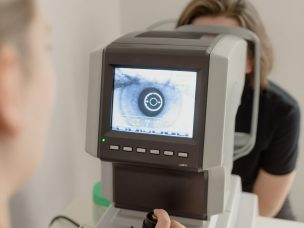Patients with wet age-related macular degeneration (AMD) require ongoing anti-VEGF treatments, which must be administered at an optimal frequency for their condition. This study, published in Translational Vision Science & Technology, sought to provide a probabilistic forecast for anti-VEGF treatment frequency using volumetric spectral domain-optical coherence tomography (SD-OCT).
The researchers used SD-OCT volume scans in conjunction with a custom deep-learning-based analysis pipeline. They extracted a variety of metrics, including retinal thickness and reflectivity values. They then used machine-learning models and natural gradient boosting (NGBoost) to predict anti-VEGF treatment frequency over 12 months.
Ultimately, it was found that the prediction of anti-VEGF treatment frequency was accurate for the study’s 96 participants with wet AMD. The intervals provided were calibrated to reflect the actual uncertainty of NGBoost-based predictions. The researchers concluded that this probabilistic forecasting model is accurate enough to predict anti-VEGF treatment frequency in real-world settings [1].
Source:
[1] Pfau, M., Sahu, S., Rupnow, R. A., Romond, K., Millet, D., Holz, F. G., Schmitz-Valckenberg, S., Fleckenstein, M., Lim, J. I., de Sisternes, L., Leng, T., Rubin, D. L., & Hallak, J. A. (2021). Probabilistic forecasting of anti-VEGF treatment frequency in neovascular age-related macular degeneration. Translational Vision Science & Technology, 10(7), 30. https://doi.org/10.1167/tvst.10.7.30










